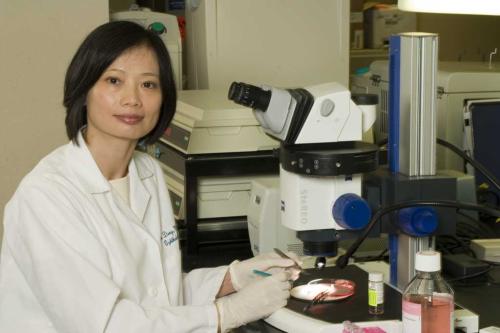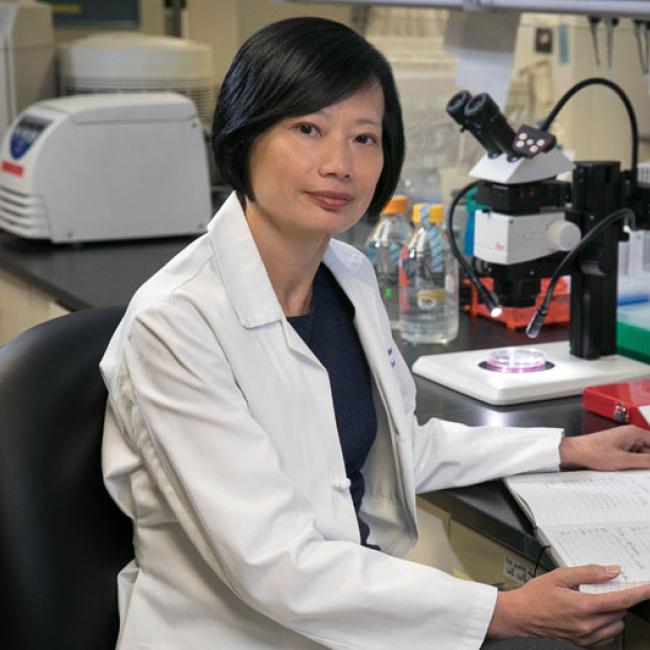
UCLA researcher receives more than $4 million in latest round of funding from California's stem cell agency
Physician-scientist Sophie Deng, a cornea surgeon at the UCLA Stein Eye Institute and member of the UCLA Broad Stem Cell Research Center, has been awarded $4,244,211 by the California Institute for Regenerative Medicine’s governing Board. With the funding, Deng will work to create specialized, patient-specific stem cells that could potentially help treat an eye condition called limbal stem cell deficiency.
In the human eye, there exists a population of specialized stem cells that help maintain the health of the cornea, which is the transparent front part of the eye that covers the iris and pupil. These cells live in the limbus, which is the border between the cornea and the conjunctiva of the eye (the membrane that covers the white of the eye). Damage to the limbus, which can be caused by burns, genetic disorders, surgeries, infection and other factors, can result in the loss of limbal stem cells, or limbal stem cell deficiency. Patients with limbal stem cell deficiency develop symptoms such as pain, corneal scarring and blindness. Additionally, patients in need of a cornea transplant must have functional limbal stem cells for a successful transplant.
Deng’s grant was funded under CIRM’s Late Stage Preclinical Project program. This program supports the acceleration of promising stem cell-based projects that have the potential to advance rapidly into the clinic and be accomplished within two years. With the new funding, Deng hopes to continue product development she initiated with a previous CIRM grant to create the first patient-specific stem cell therapy in the U.S. by 2018 to treat both unilateral and bilateral limbal stem cell deficiency.
“We are grateful for this new funding opportunity from CIRM, which will allow us to bring to the clinic a safe stem cell-based therapy for patients with limbal stem cell deficiency,” said Deng, associate professor in the Department of Ophthalmology at UCLA.
The initial work that led to this research stage was funded by the California Institute for Regenerative Medicine and the National Eye Institute.
